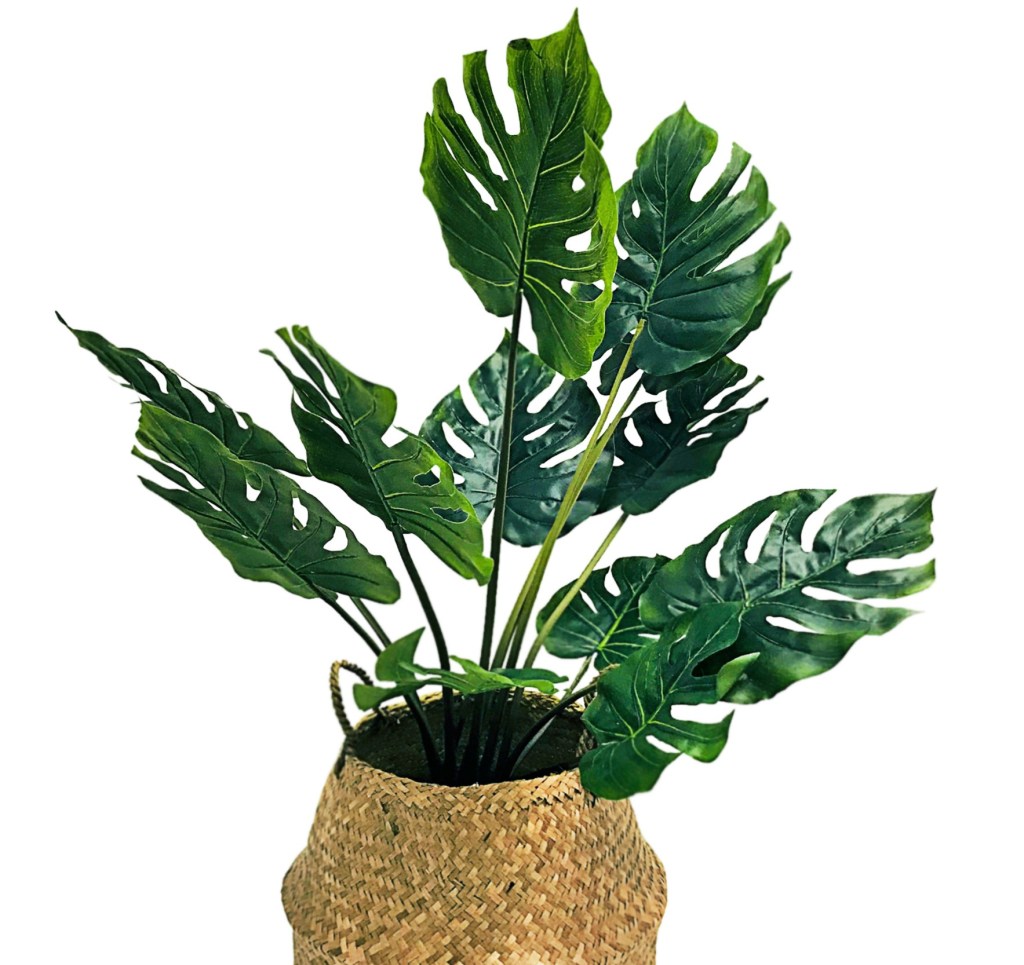Are you wanting to make a green statement? By growing a large houseplant in your home, you can do just that. Houseplants vary widely in appearance and size — with some growing so large they seem to take over a room! We’ve put together a list of our favorite large houseplants that will fit perfectly in a variety of spaces.

Monstera
Also known as the Swiss cheese plant, monstera is known for its beautiful, oddly shaped leaves, which look like they have pieces cut out of them, as stated by The Sill. These are popular houseplants in modern interior design and for good reason. They instantly make a room feel more tropical, so they’re great for exotically inspired themed rooms. There are a number of cultivated varieties of monstera, with some reaching up to 12 feet high — though on average they grow to a maximum height of 5 to 8 feet.
Taller types of monstera might require some support to grow to their full size, like a pole or trellis. Do your research on the monstera species you want to buy before bringing it home.

Kentia palm
Another tropical-looking plant, the kentia palm is also somewhat forgiving if you forget to water it for a few days. It also grows fine in low light, says The Spruce. This attractive, low-maintenance plant can live in conditions that many houseplants can’t; it is able to survive in temperatures ranging from 25℉ to 100℉. Plus, growing a kentia palm allows you to have a familiar part of the beach in your home!
When grown in containers, kentia palms reach a maximum height of less than 10 feet. If you have one of these plants for about 15 years, you will eventually be gifted with a dull red fruit.

Croton
Known for their variegated foliage, crotons have leaves that are colored in shades of red, yellow, orange, and green, says Almanac. In fact, the color of their leaves is indicative of whether or not the plant is receiving enough light. The more light the croton is being exposed to, the brighter the colors. Therefore, it is important to put a croton somewhere in your room where it will receive a good amount of sunlight throughout the day.
These are a more compact houseplant, growing to about 5 feet tall indoors. Note that all parts of the croton plant are poisonous if ingested, and when damaged, the plant releases a white sap that can irritate the skin. Although crotons aren’t the best option to have in homes with curious children or pets, they make for a beautiful addition to most homes!

Bird of paradise
Although often associated with tropical regions, the bird of paradise is actually native to South Africa. These plants have large, banana leaf-like foliage, and when cultivated correctly, they bloom unique, beautiful flowers that give the bird of paradise its name. Although the most famous variety has orange and blue flowers, other species have yellow and blue or white and blue flowers.
A bird of paradise plant requires at least a few hours of direct sunlight a day. They grow taller than they do wide and do well when grown in narrow pots. These plants reach a maximum height of 6 to 8 feet when grown indoors. Gardening Know How states, “During the growing season, optimal temperatures are 65-70 Fahrenheit (18-21 C.) during the day and 50 F. (10 C.) at night. The plants can be heavily damaged when temperatures dip below 24 Fahrenheit (-4 C.).”

Bamboo
In nature, some species of bamboo grow to be more than 100 feet tall. Indeed, bamboo is the fastest-growing plant in the world, but you can limit its growth by planting it in moderately sized pots. Bamboo prefers direct sunlight, but does OK in darker environments. This plant must be watered regularly like grass — as it is actually a type of grass.
Bamboo grows slower indoors than outside, with some varieties shedding leaves throughout the year. It is also known for being virtually pest-free! Bamboo complements most rooms of a house quite well.

Yucca
A hardy plant, yucca should not be grown in direct light. These desert natives require well-drained soil but only have to be watered every few weeks or so. In fact, overwatering a yucca can kill it, states SFGate. They grow to look like small trees with bare trunks and stiff, palm-like foliage at the top. Yucca produces white flowers that grow up a stalk in the center of the leaves.
Although slow growing, yucca plants can eventually grow to be quite large, requiring occasional pruning. Yucca is toxic to cats, dogs, and horses.
Large houseplants can really transform a room. With some easy-to-care-for options and a variety of looks, your choices for a houseplant that makes a statement are nearly endless. Hopefully this list inspires your next attempt at cultivating a large houseplant.



